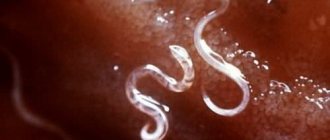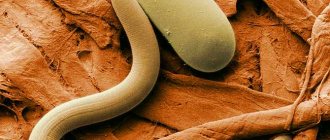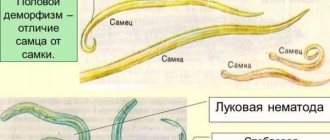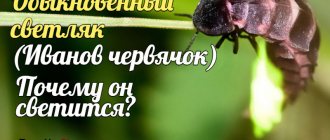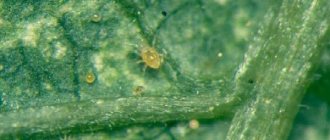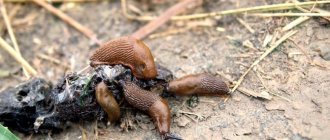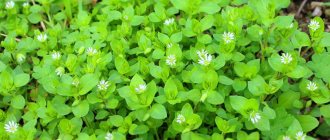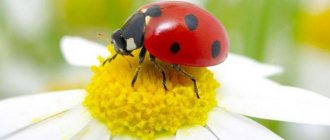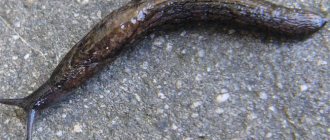Pests of garden and garden crops include not only insects and rodents. There are also parasitic worms that feed on plant sap and lead to crop loss and the death of entire plantations. One of these is the earth nematode. Its microscopic size and habitation in the soil prevent it from being seen in a timely manner, which leads to the development of severe nematosis. If the situation is neglected, the forecasts are extremely disappointing.
general information
Nematodes are roundworms of which there are a huge number of species. Many representatives are parasites that cause various pathologies in garden crops. The tissue is pierced, digestive enzymes are introduced and the juices are sucked out. This disrupts metabolism and weakens resistance to pathogenic microorganisms (fungi, viruses, bacteria). In affected crops, roots die, root crops deteriorate, stems crack, leaves become corrugated, and galls form.
What does a nematode look like?
This is a worm no more than 1-2 mm long. Females are larger in size. The body shape is round, oval or oblong, resembling threads. Color - white or beige. There is a protective shell that is strong enough to repel chemical attacks (which is why they are so difficult to remove from the site). The body is solid, not divided into segments, covered with tentacles, so the sense of touch is well developed.
The life cycle of nematodes involves 5 stages: 4 - juvenile and 1 - adult. Rhabditid individuals have a Dauer stage - a transformed 3rd juvenile stage, when dispersal and adaptation to the environment occur. During development, no significant modifications are observed. In winter, they go into the ground to the depth of freezing. In spring they move closer to the surface.
White nematode eggs are round or oval in shape. Larvae have a white head and a transparent body.
They prefer a dry and warm microclimate, ideal for breeding and laying eggs. They are distinguished by their vitality and gluttony. Soil nematodes perfectly adapt to most unfavorable factors: drought, high and low temperatures, chemicals, high humidity.
Description
Nematodes (Nematodes) belong to the class of roundworms and are one of the largest types among other representatives of the animal kingdom. Science knows about 30 thousand of their species, but their real diversity is much higher.
On a note! According to scientists, there are approximately 1 million species of nematodes in nature!
Representatives of most species are parasites of plants, many parasitize the body of animals and humans. The former provoke nematode diseases in plants, the latter include roundworms, guinea worms, trichinella, hookworms, etc. - such parasites cause diseases called nematozodes. There are also free-living nematodes that live in soil and fresh and salt water bodies.
The size of the nematode will depend on its species and can range from 80 microns to several meters. The body is spindle-shaped, tapering at both ends, and round in cross section.
On a note! The largest nematodes belong to the species Placentonema gigantissima. They parasitize the sperm whale's placenta, and their body length can be about 8 meters!
If we talk specifically about soil nematodes, their body sizes are very small - no more than 2 mm. They live exclusively in the rhizomes of plants, and in the process of life they affect the plant so much that it gradually loses its ability to function normally.
Pest types
There are several classifications. Depending on the affected part of the plant, the following nematodes are distinguished.
- Gallovaya
Galls are yellow or brown knobby growths. One such ball can contain up to 1,000 eggs. The second name is root nematode. Latin name: Meloidogyne. The largest species. The male is worm-shaped, the female is pear-shaped. Lives in the ground. Affects the nervous system of the plant. Most often it settles on the roots of flowers (carnations, roses, alpine violets, begonias, primroses), tuberous and bulbous crops (potatoes, garlic, onions).
- Leafy
One leaf can contain over 5,000 thread-like, very mobile worms. One individual is capable of giving birth to 10 generations per season. It mainly affects flowers: chrysanthemums, daffodils, phlox, begonias, orchids. Doesn't shy away from strawberries and tomatoes. Blisters appear on the leaf blades on top and spots on the bottom. They fold into an accordion or curl, then turn yellow and fall off. A large number of strongly branching lateral buds are formed, which remain underdeveloped.
- Stem
It affects stems, bulbs and tubers, causing severe deformation. Most often it destroys crops of onions, garlic, potatoes, tomatoes, beets, parsnips, parsley, cucumbers, radishes and grain crops. It often destroys flowers: hyacinths, phlox, begonias, tulips, carnations.
Depending on which plant the parasites settle on, several more types of nematodes are distinguished.
- Stem onion nematode
Affects onions and garlic. The bulbs become loose, cracks appear, and the bottom falls off. Not suitable for storage. With an advanced form of nematosis, all seedlings die.
- Strawberry stem nematode
Found on strawberries. It affects the plant gradually. The leaves become smaller and deformed, some turn into awl-shaped outgrowths. Flower rosettes do not fully develop and cannot open entirely. The mustache is shortened.
- Golden potato nematode
Affects potatoes. Reduces yield by 85%. When the tubers ripen, they emit an odor that attracts nematodes. To avoid such a misfortune, about 10 days before planting potatoes, the juice is specially squeezed out of the tubers and the arable land is watered with it. The cysts break open and the parasites rise to the surface, where they die of starvation.
- Beet nematode
The name of the disease is beet fatigue (beet fatigue) of the soil, which, when infected, becomes depleted and experiences a deficiency of potassium salts. The leaves turn brown, and the root vegetables themselves become smaller, become 2 times less in weight, and lose their sugar content by almost 6%.
Geographical distribution in Russia and the world
In open ground, root-knot nematodes are found starting from the northern borders of the Central region (Yaroslavl, Kostroma regions). The southern border of their range lies at the level of the foothills of the Caucasus.
The Northern root-knot nematode damages the plantings; the second species is the Birch nematode; it lives in the roots of birch trees and does not move to other plants.
Peanut, South and Javanese require a warm and humid climate; these species appear in Russia exclusively in greenhouses. Distributed everywhere.
Once on the open ground, the pests freeze out in winter, but they can cause damage to vulnerable annual crops in one season.
In many regions of Russia, summer is humid enough for nematodes, and the minimum temperature required for their development is only +3°C.
But worms cause serious damage to plants when 1 kg of soil is infested with 20-50 larvae, and the development cycle of an individual lasts from a month to two.
Therefore, “greenhouse” species can cause significant damage to open plantings only if contaminated soil is poured onto the site in the spring (soil from a greenhouse, from under seedlings).
In Russia, the most aggressive species of nematodes, the root-knot nematode (Meloidogyne enterolobii), is currently absent, as are the following widespread in the world:
- Colombian;
- False Colombian;
- False gall.
However, the Columbia root-knot nematode has already manifested itself in a number of European countries.
Scientists predict the appearance of the pest in Russia in the next few years.
Why does infection occur?
Favorable climatic conditions for the appearance of nematodes in the soil:
- waterlogged soil;
- temperature - 20-30°C;
- increased soil acidity (level 5.5-5.8);
- increased sand content in the soil, which is easier to move through and in which it is easier for worms to breathe due to the porous structure and access to oxygen.
Transferable from:
- infected planting material;
- insects;
- water for irrigation;
- gardening tools;
- shoes;
- wheels of vehicles;
- by the wind;
- weeds.
So absolutely any area can become infected. However, timely preventive measures can reduce the risk of plant damage and save both the crops themselves and the harvest.
Economic harm
The Meloidogyne family is one of the three nematodes that cause the greatest losses to the agricultural sector of the economy in most countries.
The root-knot nematode reduces the yield of cucumbers by 40-60%, losses of tomatoes can reach 50-60%, and losses of eggplants - 48-49%. The total damage caused by the pest is 5% of the yield of all crops.
The main share of losses due to root nematodes on a global scale is caused by four species:
- Javanese (M. javanica).
- Northern (M. hapla).
- South (M. incognita).
- Peanut (M. arenaria).
Root-knot nematode
Another seven species with the highest harmfulness are distributed locally.
Signs of infection
Due to their microscopic size, it is impossible to detect parasites with the naked eye. You can only examine them with a magnifying glass, and only if they are leaf or stem. Therefore, you should pay attention to signs of plant infection.
Signs of root damage:
- strong branching of the root system (they say that it becomes “bearded”);
- rotting and dying;
- formation of galls (nodes and seals) of various shapes;
- loss of root hairs;
- the formation of pointed swellings - “beaks”, ulcers.
Signs of damage to the above-ground parts of the plant:
- spindle-shaped thickenings of stems;
- underdevelopment, deformation (corrugation, twisting), destruction, blanching of leaves;
- swelling of leaf petioles and tendrils;
- the formation of soft necrotic dark brown spots of various shapes, scattered in a chaotic manner;
- cracks and other microdamages;
- looseness and softening of the bulbs;
- slow germination;
- stopping the growth and development of seedlings;
- incomplete opening of flower calyxes;
- partial (sometimes complete) drying of plants (especially in the first year of life);
- reduction or loss of harvest.
Without taking timely measures, the parasite can destroy both the entire crop and the plants themselves.
Clematis
The nematode ranks second among the most dangerous and harmful diseases and pests of clematis, second only to wilt. The damage goes unnoticed for a long time - the plant develops normally for several years.
Symptoms appear only when there is a significant accumulation of nematodes in the roots. The bush begins to grow more slowly, blooms weakly, and spots and stripes that are uncharacteristic of the variety may appear on the flower petals.
But none of these signs allows one to unambiguously confirm damage by a nematode; it is necessary to examine the root system.
To check, it is enough to dig up a small layer of soil and assess the condition of the upper roots.
Digging up a plant is dangerous: a healthy one will slow down its growth even more after transplantation, and it is almost impossible to cure a diseased clematis.
Ornamental plants can be sprayed with strong chemicals. But such means inhibit the development of bushes.
Suitable for soil treatment:
- Confidor-maxi;
- Maxi;
- Bazudin;
- Rogor;
- BI 58;
- The spark is golden;
- Anti Khrushchev;
- Aktara.
The systemic drug Marshall shows good results on clematis; it penetrates the roots and poisons the females.
Some anthelmintic drugs intended for animals, for example, Tetramizole, also help.
There are no restrictions on biological agents, but even they sometimes have a depressing effect on clematis.
If the plant had to be removed, you can cut cuttings from it and root it in other places.
Strong specimens can withstand half an hour of heating the roots in hot water (+50°C).
Heat treatment is also applied to other ornamental crops:
- gerberas – 20 minutes at +48°C;
- irises and gladioli – 10 minutes at +51°C or 5 at +53°C;
- roses – 10 minutes at +50°C or 15 at +46…+47°C;
- bulbs – 10-15 minutes at 45°C or 3-5 at 55°C.
Chemicals
The fight against nematodes in the garden is complicated by the fact that they have a dense protective shell, through which even the most aggressive agents effective against other pests cannot penetrate. And yet there are chemicals that can destroy this infection. These are nematicides that act on worms in different ways:
- through the respiratory system: Carbation (nematin, vapam, methaminatrium), Methyl bromide, Chloropicrin (nitrochloroform, trichloronitromethane), Nemagon (dibromo-1-chloropropane);
- contact: Methylmercaptophos, Phosfamide (organophosphorus insecticide), Karbofos (malathion), Lindane (hexachlorane);
- complex action (complete soil sterilization): Chloropicrin (trichloronitromethane).
The most effective chemicals are Nemaphos, Dimethoate-400, Tiazon, BTB, Lepidocid, Trichodermin (hazard class IV biological product). Spraying and watering are carried out several times at intervals specified in the instructions for the product used.
You need to work with nematicides extremely carefully: wear a protective suit, gloves and goggles. At the end of the procedure, take a shower, preferably with antibacterial soap.
Now a new drug based on predatory fungi has been developed - Nematophagin-Micopro. The prices are quite reasonable. Reviews are mostly positive. Available in both powder and liquid form. You can order online.
Mechanical method
You can get rid of root-knot nematode by digging up the infected plant and removing the root. The bush needs to be divided into several parts. If possible, it is worth leaving as many cuttings as possible. This determines how quickly the numbers of the infected variety can be restored in the future. The resulting cuttings are grown in a special way: each part is subject to strict quarantine. It lasts at least a year. A long quarantine is needed to prevent possible re-infection, because if the cuttings were initially carried out incorrectly, then the nematode larvae could remain on the plant.
The effectiveness of the mechanical method of controlling root pests is difficult to predict. Much depends on the plant itself, the degree of damage, the placement of the “clean” part relative to the colony, etc.
How to get rid of nematodes - folk remedies
Not all gardeners, faced with a problem, rush to purchase chemicals. After all, they are aggressive not only for worms, but also for the plant, and even for human health. It is believed that with constant use, fruits, leaves, stems tend to accumulate the active substances of the drug. In this case, you can try folk remedies that destroy the parasite in the soil.
- Hot shower
Before planting, pour boiling water generously onto the soil to a depth of about 20 cm. Cover the top with plastic wrap, pressing down with a weight. It does not provide 100% relief from the nematode, since it can go even deeper.
- Potato sprouts
Grind 1 kg of potato sprouts, add a bucket of water and add 50 g of urea.
- Marigold
Grind 1 kg of fresh marigolds (flowers). Fill with a bucket of water. Leave for 2 days. Filter. Every other day, water the soil with the resulting infusion.
- Poisonous hogweed
Pour 1 kg of hogweed into a bucket of water. Leave in a warm place for a day. Mix. Filter.
- Calendula officinalis
Pour 1 tbsp. l. dried calendula flowers 1 liter of water. Leave it covered for a day. Water the infected plant every week.
- Onion
Grind 400 g of onions along with the husks, add a bucket of water. Leave for a day. Filter. Water the contaminated soil once a week.
Mistakes when fighting nematodes
Common mistakes that gardeners and flower growers make when trying to cope with nematodes are:
- The use of insecticides alone, without the use of agrotechnical methods and folk remedies.
- Untimely destruction of affected plants and plant waste.
- Late start of treatment for diseased plants.
- Disposing of contaminated plant waste into a compost bin.
Pest eggs are distinguished by their vitality: they are able to maintain vital activity for 10 years.
Recommendations for agricultural technology
Solving the problem of nematode infestation of a site must be approached comprehensively. It is also useful to use the following recommendations:
- Weed the area.
- Uproot heavily affected plants and burn them outside the garden.
- Spraying should be carried out in dry, windless weather. Preferably early in the morning or late in the evening.
- If the crop grew in a box or pot, replace the soil in it.
- In flowerbeds and beds, remove the top layer of soil, then steam the soil for 10 minutes at a temperature of ≈ 60°C.
- If you had to remove all the infected plants, then you need to disinfect the soil with urea: 1.5 kg of urea per 1 m2 of land.
- If nematosis was detected in a timely manner and it is not yet advanced, urea is applied at the rate of 200 g per 1 m2 of land.
Prevention
It is very difficult to get rid of nematodes in indoor plants, and even impossible to get rid of some of its species. In this case, it is extremely important to prevent infection.
Try to follow the following rules for growing a home collection:
- Before using the soil to plant a plant, be sure to heat it in the oven or in a frying pan on the stove.
- Place each pot in a separate tray.
- Do not place new copies immediately with the others. First keep them in isolation for 2 - 3 weeks.
Plant nematodes can cause significant damage to home collections. Try to avoid its occurrence by following the rules of prevention. If the pest attacked your pet, use a comprehensive treatment method.
Biology of roundworms
They reproduce in two ways:
- The female is on the surface of the root and lays eggs in a sac, the larvae from which first fall into the soil, and then make their way into the root system of the host plant, after which it becomes infected. The female individual is completely in the tissues of the root and lays eggs inside it. The hatched larvae move through the root tissues and settle there for feeding and development. Biological methods of protection no longer work on them.
It should be noted that larvae from the roots, under favorable conditions, are able to move throughout all organs of the plant.
